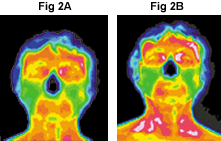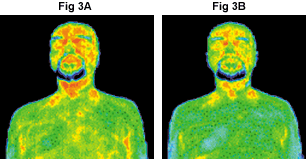Chinese medicine starts with the teaching of meridians and acupoints. Western medicine starts with the teaching of anatomy, which is the foundation of Western medicine. Here, we discover heart, nerves, blood, hormones, cells and DNA.
The meridian system is the foundation of Chinese medicine. The rational is that the meridian system is the most senior. It governs all others: circulation, central nervous, hormone and immune, as examples. The most extensive and solid evidence to support the view that the meridian system is the most senior is that acupuncture works. By using a single needle at some crucial points on the meridian system, it is able to treat hundreds of diseases.
At present, the research effort is totally one sided. Any subsystem of our body that claims to be fundamental, attracts the attention of thousands of excellent research workers. They spend billions of dollars to investigate the brain, DNA, stem cells and so on. The research effort on Chinese medicine is comparatively very small. There is even less research on the evidence that illuminates the molecular basis of the meridian system. I am a theoretical physicist and understand and practice the rigor of Western science. I am also a researcher in Chinese medicine. I see the huge gap between the requirement of a rigorous science and the state of affairs in the molecular basis of the meridian system. The gap needs to be bridged.
I want to show that the meridian system is the most senior system of our body. Our hypothesis is that meridians are made up of stable water clusters that have polar charges, positive (yin) on one end and negative (yang) on the other end. We manufactured a large quantity of water that contains stable water clusters (SWC water). Drinking this water will repair blockage in meridians (see my earlier articles). The ability of acupuncture to cure hundred of illnesses comes from eliminating blockages in meridians. Hence, I reason that this SWC water should also be able to influence health in a comprehensive way.
In order to test this, we recruited 78 volunteers. Three sets of infrared images of the whole body were taken. One set was taken before the subjects drank a cup of ordinary distilled water. The second set was taken 10 minutes later. The subjects were than given SWC water. The third set of infrared images was then taken 20 minutes later. Subjects were not told which water was distilled and which SWC.
After detailed analysis of the subjects' body temperature distribution, we concluded that everyone is significantly affected by drinking SWC water in comparison to drinking ordinary distilled water. Let me give you a part of data from the experiment to support this assertion. We use the maximum temperatures (T) in the frontal neck and frontal shoulder region as a quantitative parameter to indicate the state of health in that region. The maximum temperature before drinking ordinary water was denoted T1. The maximum temperature 10 minutes after drinking ordinary water was T2. The maximum temperature 20 minutes after drinking SWC water was T3.
There were 26 subjects whose frontal neck and shoulder region does not change much after drinking ordinary water. Quantitatively, the maximum temperature change (T2-T1) is less than 0.25 C. We then looked to see whether the state of health for these 26 subjects changed after drinking the SWC water. If SWC is like ordinary distilled water, we expect there will be no change in the state of health. This means the change in maximum temperature (T3-T2) will be less than 0.25 C. We can then classify the subjects into three groups: little change in maximum temperature; maximum temperature increases; or maximum temperature decreases.

 Fig 2: Infrared images of subject before drinking ordinary water (2a), and 30 minutes later after drinking ordinary and SWC water (2b) . The maximum temperature changes was 0.6 C, which was a combination of a change of 0.2 C from drinking ordinary water, and another change of 0.4 C from drinking SWC water.
Little change in maximum temperature: In Fig 1, the color code is hottest temperature in white, then red, yellow, green and blue, with the coldest in black. Visually we see little difference in color pattern in the frontal neck and shoulder region. Fifteen subjects had little temperature change whether they drink ordinary water or SWC water.
Fig 2: Infrared images of subject before drinking ordinary water (2a), and 30 minutes later after drinking ordinary and SWC water (2b) . The maximum temperature changes was 0.6 C, which was a combination of a change of 0.2 C from drinking ordinary water, and another change of 0.4 C from drinking SWC water.
Little change in maximum temperature: In Fig 1, the color code is hottest temperature in white, then red, yellow, green and blue, with the coldest in black. Visually we see little difference in color pattern in the frontal neck and shoulder region. Fifteen subjects had little temperature change whether they drink ordinary water or SWC water.
Maximum temperature increases: The heating is measured quantitatively by the increase of maximum temperature (T3-T2). This value must be greater than 0.25 C. Four subjects have this characteristic. We display the pictures for one female subject in Fig 2.
Maximum temperature decreases: There were seven subjects whose maximum temperature changed little after drinking ordinary water. It changed significantly, however, after drinking SWC water. In Fig 3, we show the pictures for one such subject. The maximum temperature had no change after drinking ordinary water but decreased after drinking the SWC water.

One of the most significant things we discovered was that each of the 15 subjects whose frontal neck and shoulder temperatures showed little change had some other part of the body change temperature significantly from drinking the SWC water. For example the frontal chest region for one subject cooled down significantly as shown in Fig 4.

In conclusion, this study of 78 subjects indicates that the effect of drinking SWC water was different from drinking ordinary distilled water. There was a significant effect on every subject in some part of their body. We regard this result as a support that the meridian system is the most senior system in the human body.
Click here for previous articles by Yin Lo, PhD.




